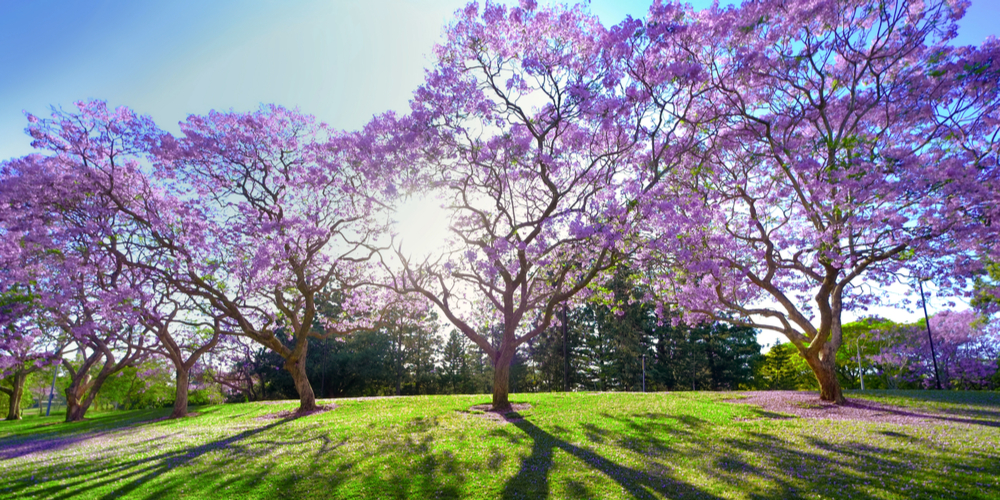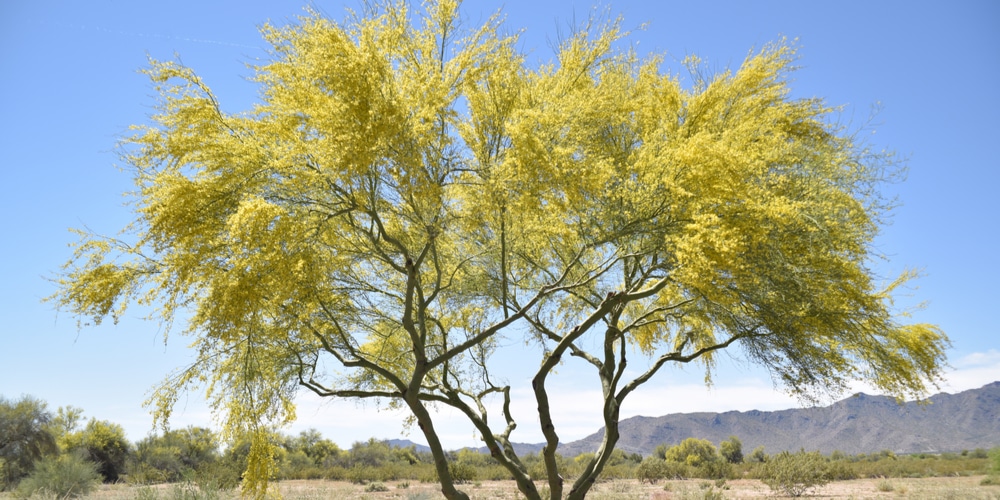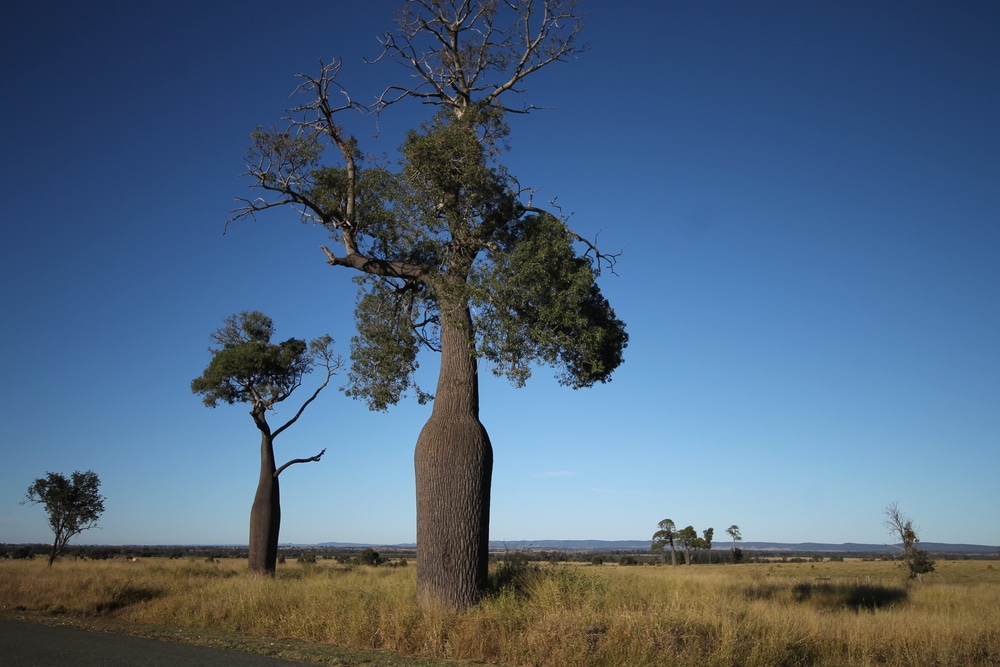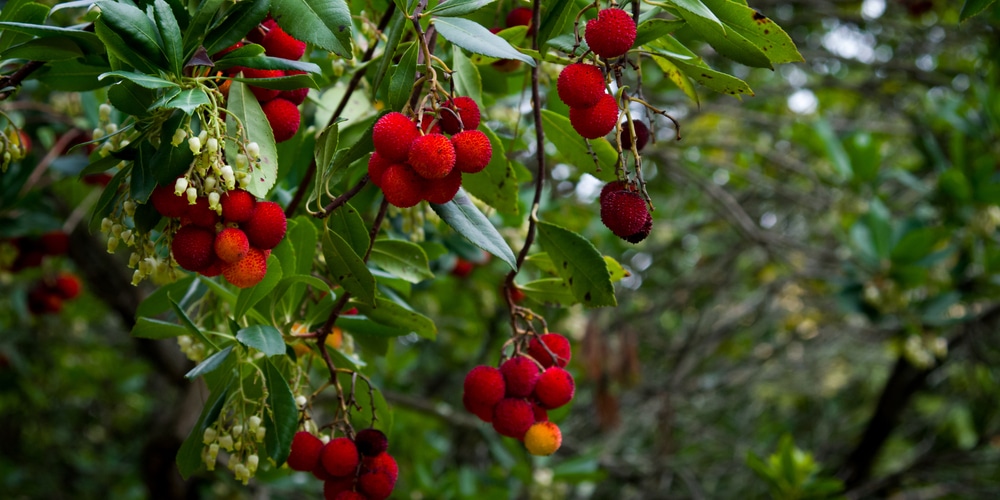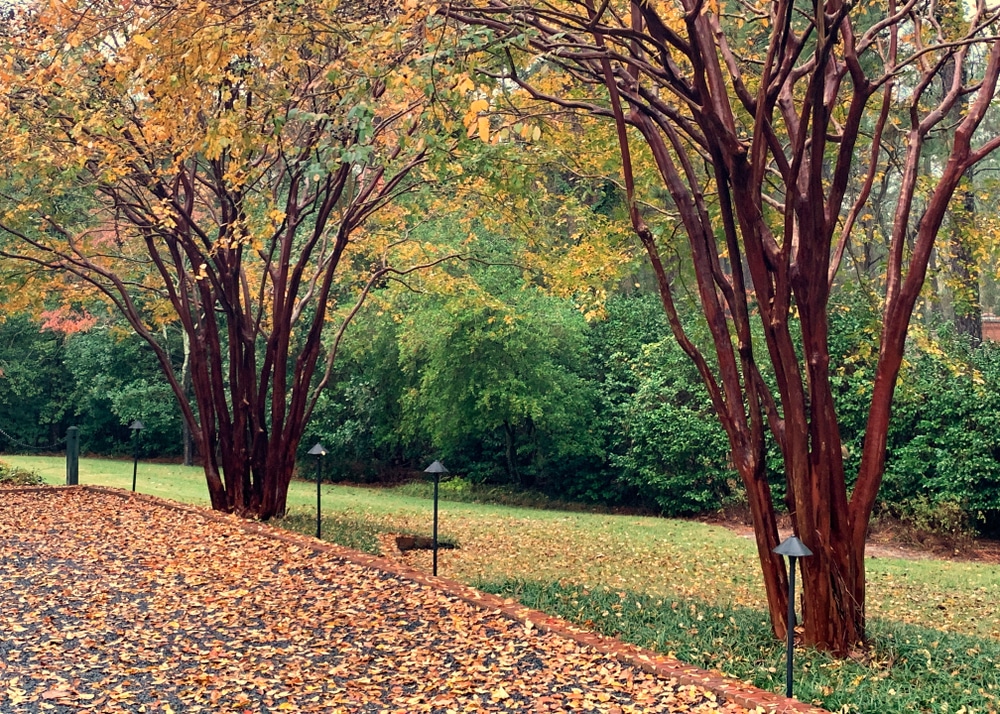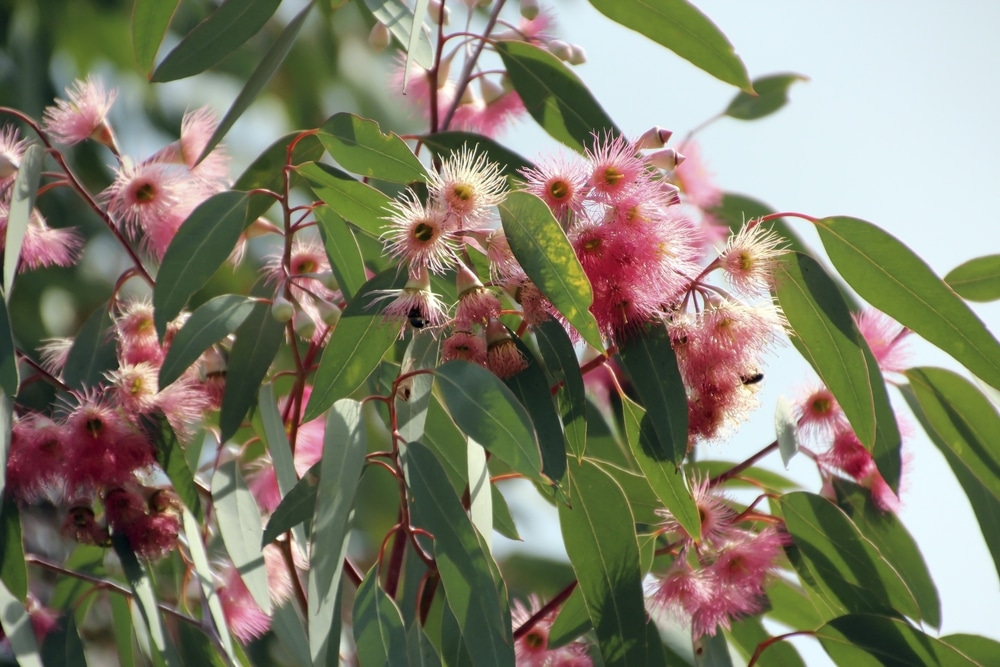Many people who have never been to Arizona think of the Grand Canyon State as a saguaro-filled red desert, and in much of the state, they would be right. However, some fantastic trees produce gorgeous flowers in Arizona’s arid climate, which has only nine inches of average yearly rainfall.
Jacaranda
This beautiful tree is a native of Bolivia, Brazil, and Argentina. It has since spread worldwide because of its extensive ornamental use.
The Jacaranda tree, also known as Jacaranda mimosifolia, has bell-shaped hanging purple flowers in the spring, and it can even continue blooming into the summertime.
These purple beauties have deep root systems once they mature, so they are drought resistant—a great trait to have in Arizona. It is a popular feature in landscaping, and you will almost always see jacaranda trees on Arizona golf courses.
Desert Museum Palo Verde
These trees are widely seen showing off their bright yellow flowers in the spring and throughout the summer months—much longer than other Palo Verde trees.
It’s an excellent shade tree, and when it flowers, it dramatically changes from bright green to a vibrant yellow, covered in gorgeous little flowers. It loves full sunlight and well-draining soil, so it was meant to thrive in Arizona.
The Desert Museum Palo Verde has three parent trees; Parkinsonia microphyllum, Parkinsonia floridum, and Parkinsonia aculeata.
Bottle Tree
The bottle tree, also known by its scientific name, Brachychiton populneus, is evergreen. So whether or not it’s blooming, you can always enjoy a large, leafy beauty providing shade year-round.
When it does bloom, which is in early spring and sometimes the middle of spring, it produces bell-shaped flowers that are cream-colored outside and spotty pink on the inside.
Since this tree grows 30 to 45 feet tall, it’s much easier to appreciate these lovely flowers up close once they flutter to the ground.
The bottle tree does well in Arizona because it is used to desert climates without much rainfall—it’s originally from the Australian Outback. It is also called kurrajong, meaning “shade tree,” in one of the aboriginal languages of Australia.
Strawberry Tree
No, not those strawberries! The Arbutus unedo grows up to 30 feet tall and can grow to be just as wide. These trees can grow in almost anything; in fact, they prefer a growing medium that’s acidic and not full of nutrients, which means that sandy, rocky ground is no problem for them. They can also grow in clay.
Strawberry trees are hardy and strong, resisting drought and high winds that Arizona tends to throw at its foliage. The strawberry tree blooms later in the year, from October to December, and the little flowers are mostly spherical and pinkish white. The little fruits they produce are used to make wine and preserves.
Crepe Myrtle
Crepe myrtles, also known as Lagerstroemia indica, thrive in full sunlight in the Deep South and the Southwest deserts. These trees usually grow from 15 to 25 feet tall and can grow up to 15 feet wide if left to do so.
It produces profuse pink blooms for about four months (June to September); otherwise, it’s covered in lush green leaves. Young crepe myrtles need lots of water while they develop their root systems and grow to maturity, but once they develop deep roots, they are drought resistant, which helps them in the desert.
Coral Gum Eucalyptus
The coral gum eucalyptus is native to Australia. However, it’s a perfect fit for the conditions in Arizona. Scientifically named Eucalyptus torquata, it produces stunning bright pink blooms in the summer that are reminiscent of dancers with flowing orange-pink dresses.
These trees are not only shade trees for the whole year, but their flowers are an essential source of nectar for pollinators like bees and bats. Coral gum eucalyptus trees don’t need a lot of water, their foliage is fragrant, and they can grow in pretty much any soil.
Flowering Trees in Arizona: Conclusion
So, there you have it! These are some of the best flowering trees that will thrive when grown in Arizona’s conditions, even if they’re not all native to the land.
